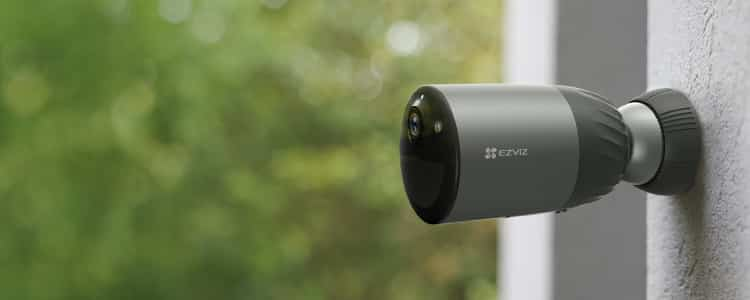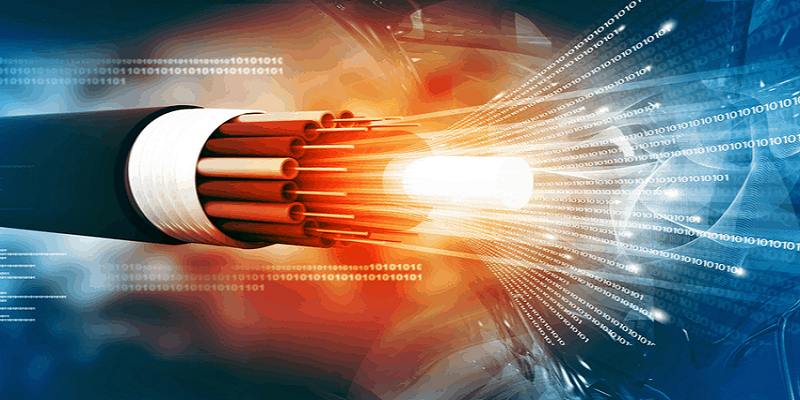Manufacturers
As a Developer Anti Virus Total Security features of an antivirus total security solution that offers white labeling, which means it can be rebranded and offered under another company's brand name. Below is a breakdown of the features you've listed:

Ransomware: is a type of malicious software (malware) that encrypts a victim's files or locks them out of their own system until a ransom is paid to the attacker. It is a form of cyber extortion where the attacker demands payment, usually in cryptocurrency, in exchange for providing the victim with the decryption key or restoring access to their system. Ransomware attacks can have severe consequences for individuals, businesses, and organizations.
Anti-Keylogger: Protects against keyloggers, which are malicious programs designed to capture keystrokes and steal sensitive information like passwords and credit card numbers.
Cloud-Based Protection: Utilizes cloud resources for enhanced scanning, real-time updates, and threat detection. This allows for quicker response to emerging threats.
Data Theft Protection: Safeguards against unauthorized access to and theft of personal or sensitive data.
Deletes Junk Data: Cleans up unnecessary and redundant files on the system, freeing up storage space and potentially improving performance.
Efficient & Fast Protection: Provides quick and effective protection against various types of malware without significantly impacting system performance.
File Watcher: Monitors files and directories for suspicious activity, such as unauthorized modifications.
Local Server Updates: Allows the product to update its virus definitions and software components from a local server within the network, reducing external internet traffic.
Malware Protection: Guards against a wide range of malware, including viruses, worms, Trojans, and other malicious software.
PC Speed Booster: Optimizes system performance by cleaning up system files, managing startup programs, and optimizing settings.
Protection From Spyware: Detects and removes spyware, which is software designed to gather information about a person or organization without their consent.
Repairs Registry: Addresses issues in the Windows registry, which can help improve system stability and performance.
USB Vaccination: Prevent USB drives from spreading malware by immunizing them against common threats.
System Guard: Monitors and protects critical system components from unauthorized changes or tampering.
USB Protection: Scans USB drives for malware and prevents potential infections from spreading via USB devices.
Realtime Protection: Provides continuous monitoring and real-time scanning of files, processes, and activities to detect and block threats as they occur.
Right Click Explorer Scanning: Enables users to scan files and folders by right-clicking on them in the Windows Explorer context menu.
Automatic File Infection Removal: Automatically removes infected files or quarantines them to prevent further harm.
Scheduled Scanning: Allows users to schedule regular scans at specific times to ensure consistent protection.
System Volume Information Cleaner: Cleans up the System Volume Information folder, which can contain unnecessary and potentially harmful files.
Duplicate File Finder: Identifies and helps remove duplicate files on the system, freeing up space.
Unhide Files/Folders: Allows users to unhide hidden files and folders that might have been concealed by malware or other actions.
These features collectively provide comprehensive security against various types of threats and help optimize system performance. The white labeling option allows other companies to offer this security solution under their own branding.
-----------------------------------------------------------------------------------------------------------------------------------------------
Security cameras come in various types, each designed for specific purposes and environments. Here are some common types of security cameras:

Dome Cameras: These cameras have a dome-shaped housing that makes it difficult for people to determine where the camera is pointing. They are often used in indoor spaces like retail stores, offices, and hotels.
Bullet Cameras: Bullet cameras are cylindrical and can be easily mounted on walls or ceilings. They are typically used for outdoor surveillance and come with weather-resistant housings.
PTZ Cameras (Pan-Tilt-Zoom): These cameras can be remotely controlled to pan (move horizontally), tilt (move vertically), and zoom in on specific areas. They are commonly used in large areas where active monitoring is required, such as parking lots or expansive properties.
IP Cameras (Network Cameras): IP cameras connect to a network and transmit video footage over the internet or local network. They offer features like remote viewing, easy scalability, and integration with other devices and systems.
Wireless Cameras: These cameras use Wi-Fi or other wireless technologies to transmit video data. They are convenient for installations where running cables is challenging.
Outdoor Cameras: These cameras are built to withstand outdoor conditions, including weather and temperature fluctuations. They are designed to be more durable and weather-resistant compared to indoor cameras.
Indoor Cameras: Indoor cameras are optimized for use within buildings. They are typically smaller and less rugged compared to outdoor models.
Covert or Hidden Cameras: These cameras are designed to be discreet and blend into the environment, often disguised as ordinary objects. They can be useful for covert surveillance purposes.
Wide-Angle Cameras: These cameras have a wide field of view, making them suitable for monitoring large areas with a single camera.
Infrared (IR) Cameras: IR cameras have built-in infrared LEDs that allow them to capture clear video footage even in low-light or complete darkness. They are commonly used for nighttime surveillance.
Thermal Cameras: Thermal cameras detect heat signatures rather than visible light, making them useful for detecting intruders or objects in complete darkness or adverse weather conditions.
License Plate Recognition (LPR) Cameras: These cameras are specialized for capturing license plate information on vehicles. They are often used in parking lots, toll booths, and access control systems.
360-Degree Cameras: Also known as panoramic cameras, these cameras capture a full 360-degree view of their surroundings, eliminating blind spots.
Vandal-Resistant Cameras: These cameras are designed to withstand tampering, vandalism, and physical damage. They are commonly used in areas where the risk of intentional damage is high.
Smart Cameras: These cameras come with built-in analytics and advanced features such as facial recognition, object tracking, and motion detection.
When choosing a security camera type, consider factors like the intended location, lighting conditions, required features, budget, and monitoring requirements.
------------------------------------------------------------------------------------------------------------------------------------------------
We are a leading manufacturer of a variety of networking and telecommunications equipment. Here's a brief overview of each of the products you mentioned:

E/GPON OLT: An Ethernet/Gigabit Passive Optical Network Optical Line Terminal (E/GPON OLT) is a device used in fiber-optic communication networks to manage and control multiple Optical Network Units (ONUs). OLTs enable the provision of high-speed broadband services to multiple users through a shared optical network.
E/GPON ONU: An Ethernet/Gigabit Passive Optical Network Optical Network Unit (E/GPON ONU) is a customer-side device in a PON network. ONUs receive and transmit data between users and the central OLT. They provide Ethernet interfaces for connecting various devices, such as computers, phones, and routers.
PON SFP: A Passive Optical Network Small Form-Factor Pluggable (PON SFP) module is a compact optical transceiver used to connect networking devices to PON systems. It interfaces with the PON infrastructure and enables the transfer of data over fiber-optic cables.
Fiber SFP: A Fiber Small Form-Factor Pluggable (SFP) module is a versatile optical transceiver used in networking equipment. It allows devices to transmit and receive data over fiber-optic cables, enabling high-speed and long-distance data communication.
Splicing Machine: A splicing machine is used to join two optical fibers together to create a continuous optical path. This is crucial for establishing reliable and efficient connections in fiber-optic networks.
Media Converter: A media converter bridges the gap between different types of networking technologies, such as converting between copper Ethernet and fiber-optic connections.
POE Switches: Power over Ethernet (PoE) switches provide both data and electrical power to devices like IP phones, cameras, and wireless access points over a single Ethernet cable.
Passive Components: Passive components in a network include elements like splitters, couplers, and connectors that don't require power and enable the distribution and management of optical signals.
FXS & FXO Gateways: Foreign Exchange Station (FXS) and Foreign Exchange Office (FXO) gateways facilitate the connection between traditional analog telephony systems and Voice over IP (VoIP) networks.
Enterprise IP Phones: IP phones are digital communication devices that use Voice over IP technology to make and receive calls over the internet or an IP network.
PRI Gateways: Primary Rate Interface (PRI) gateways connect traditional analog or digital telephony systems to modern VoIP networks.
FTTH (Fiber to the Home): FTTH involves delivering high-speed internet, television, and other communication services directly to residences using fiber-optic cables. This technology enables faster and more reliable connections compared to traditional copper-based networks.
Smart Cities: Smart cities leverage technology and data to improve the quality of life for residents, enhance urban operations, and reduce resource consumption. This can involve solutions like smart infrastructure, IoT devices, data analytics, and efficient public services.
Wireless: The wireless sector covers a wide range of technologies, including wireless communication networks like cellular networks (3G, 4G, 5G), Wi-Fi, and Bluetooth. These technologies facilitate mobile communication, internet access, and the connectivity of various devices.
Data Centers: Data centers are facilities designed to house and manage computer systems and related components, such as servers, storage systems, networking equipment, and more. They play a crucial role in supporting cloud computing, online services, and digital infrastructure.
Telecom: The telecommunications sector encompasses a broad range of communication technologies and services, including voice, data, video, and internet services. This can involve traditional telephone networks, mobile networks, internet services, and more.
Given the scope of your manufacturing activities, your company likely contributes significantly to the development and deployment of technology solutions that enable high-speed communication, data transfer, and connectivity. Your products are likely to play a crucial role in modernizing communication networks, improving urban infrastructure, enhancing wireless connectivity, and supporting digital services in various sectors. As technology continues to evolve, your company's products will likely have a substantial impact on shaping the future of telecommunications and connectivity.